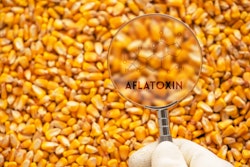
Innovation is focused on feed additives. But, even in raw materials, we can find attributes that we either ignored or were unable to detect in the past. With that in mind, and based on our own work laid ahead of us for 2024, I will present six raw materials that worth keeping in mind. Some may be already well known to you, whereas others might appear as a surprise, but they all have an interesting angle that needs monitoring.
1. Alfalfa for monogastrics
Even for ruminants, alfalfa no longer enjoys the prominent position it had in the past. But this is just a matter of balancing cost. Nevertheless, alfalfa is already making a comeback in those feeds and, surprisingly, we are finding good uses for it even for monogastric animals. Alfalfa is rich in functional fibers, high in protein, and contains a plethora of minerals and vitamins. In our experience, it also imparts a very favorable taste to animal products, too.
2. Sorghum
This is a really old story, but sorghum that is free of tannins is making inroads, globally, not only as an imported/exported grain, but also as a locally grown crop. This has to do with climate change. For example, in our experience, farmers who used to follow winter crops with corn now turn favorably to planting sorghum as water supplies become scarce or more expensive.
3. Linseed meal
Or, as it is more likely to be called in North America, flaxseed. We continue to work heavily with this crop as the benefits when used in a plethora of applications are visible to farmers. Linseed is the richest source of omega-3 fatty acids among plants, and this is only the beginning as it contains a good number of other functional nutrients. Lamentably, supply and logistics make it hard to secure it where it is needed.
4. Sugar beet pulp (pelleted)
The majority of this byproduct is consumed wet locally, mostly in ruminant feeds. When energy cost is low enough, it can be pelleted and sold as a commodity. Dairy farms use it extensively and, in our experience, it is an ingredient that should have a prominent place on swine farms, as well. Feeding whole pellets along some other pelleted (or not) raw materials is a new idea we are exploring, not only for swine but also for beef.
5. Refined plant-based proteins
There is a plethora of new and old ingredients that focus on providing refined proteins (without anti-nutritional factors) to young animals. This is to replace other expensive, mostly animal-derived proteins. Surprisingly, the rate of success is rather high, and we have had good experiences with many such refined plant-based proteins. However, this remains a brand- or process-specific observation, meaning not all products that share the same name behave similarly.
6. Olive cake
With or, preferably, without the stones, this is a rather new ingredient, especially for monogastrics. But, olive production is growing globally as the health benefits of olive oil become well-known to consumers. Given the inefficient (cold press) way olive oil is produced, a good amount of oil and flesh remains behind. In the past, this was burnt for energy production, but now it is a much sought-after ingredient due to its flavor-imparting characteristics in meat. This is new technology, but it is coming strong.
















